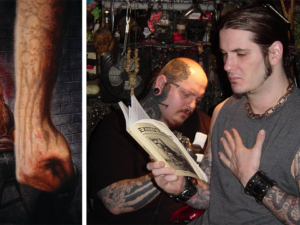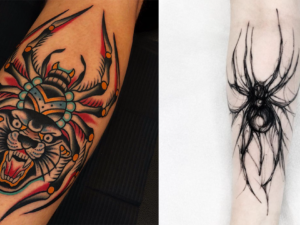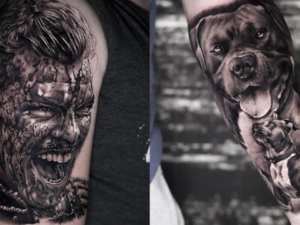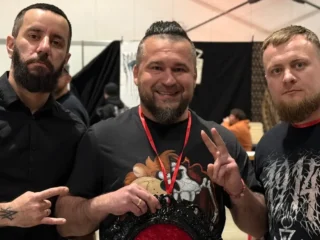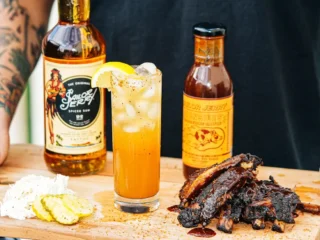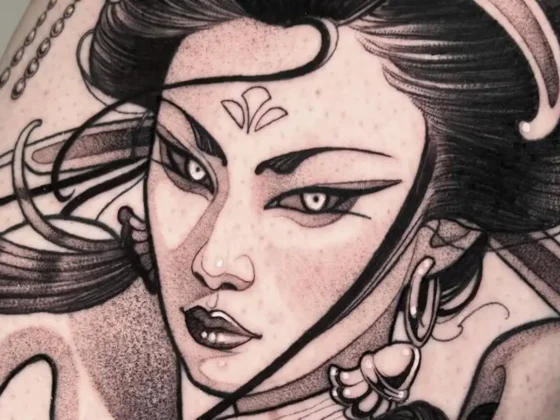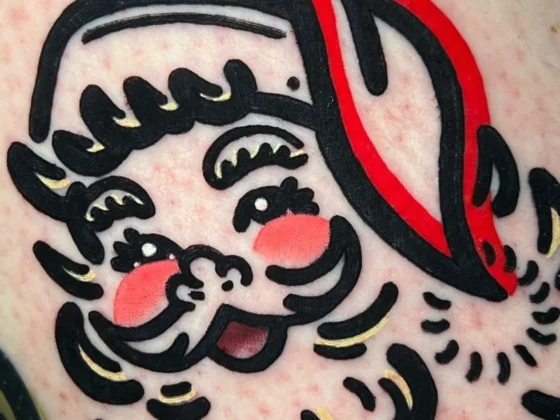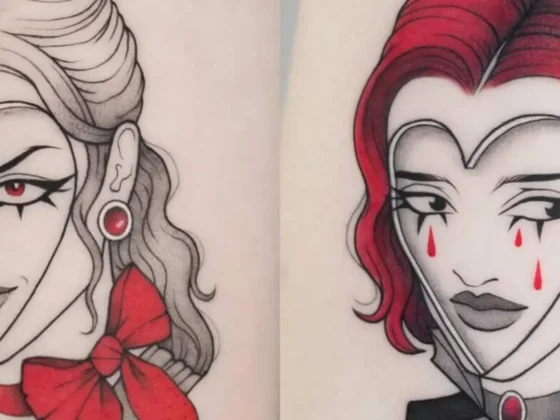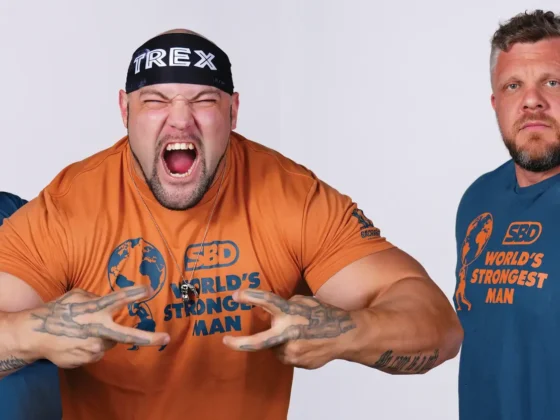Inked Mag
December 17th, 2018
Is Preserving the Tattooed Skin of a Corpse Ethical?
Save My Ink embalmer talks to INKED about the ethics of preserving tattoos; getting equated to the works of serial killer, Ed Gein; and preserving the late Chris Wenzel's full body suit.
Thanks to museums, collections from artists like Picasso, Van Gogh, and Monet are still very much alive. But what if a private art collector was given a custom piece from one of these high-esteemed artists? When the collector were to pass away, the family would inherit the prized possession. Not only for the value of the piece itself, but as a remembrance of their beloved art collector. Would it even be ethical to have them buried or cremated with it?

Yet, when it comes to preserving body art, the sentiment is lost in translation, quickly turning into an Ed Gein skin-lampshade scenario. But some of these tattoos are given by the Picassos, Van Goghs, and Monets of the tattoo world.
If you have a tattoo by Sailor Jerry, letting it burn or decompose is just disappointing to history.
This is why Save My Ink Forever was created.

Kyle Sherwood, Save My Ink Forever mortician, sits with INKED to talk about the ethics of preserving tattoo art.
“These tattoos shouldn’t have to be buried or cremated,” Sherwood said. “We want to give people the option.”
With the work Save My Ink Forever does, both the body art and legacy of the deceased, may live on.
“Why am I to discount the value of art? Having this option is more meaningful than ashes or visiting a headstone,” Sherwood said. “You have a piece of that person, and a piece of them that they’ve chosen to represent themselves with.”

Sherwood is a third-generation mortician. His granddad had a trade embalming company, meaning he would go from funeral home to funeral home, embalming any case they had.
“His nickname was ‘Mean Gene the Embalming Machine,’” Sherwood said. “He was most proud of the fact he embalmed Chef Boyardee. Yes, Spaghettios and meatballs.”
Sherwood recalls being at a young age and trying to “take a peek into the prep room” when the door would half-swing as his dad, Michael Sherwood, would walk in.
“When you are running around a funeral home in your Huggies training pants, you are bound to be curious about things,” Sherwood said.

As Kyle got older, he started helping around the funeral homes, like washing cars and setting up flowers. Sherwood explained, “This later turned into doing body removals, dressing and casketing.”
Thus, became Sherwood’s leg tattoo. The tattoo is of specific tools a mortician uses, with a tool for each generation and their initials,” Sherwood said. “It is kind of like a family crest.”
The Preservation Process
“When someone dies, either the family contacts us or the funeral home contacts us,” Sherwood explained. “There is an authorization form to next of kin, telling us where the tattoo is located, a description of tattoo (size, where on the body, etc.). From there we send a kit with a drying preservative to keep the tattoo safe.”

After the kit is sent back to the funeral home, Save My Ink Forever continues the preservation process. Sherwood explained that this takes about three months.
Finally, it is framed with UV-protective glass, to prevent any damage while being hung.
“You can’t tell it is skin after it all,” Sherwood said. “The pieces end up looking more like parchment paper.”
For bigger tattoo pieces, Sherwood explained that “we would never separate pieces that would go together.”
Save My Ink Forever had gone through many preservation and presentation methods before being what they are today. After experimenting with clear resin, which Sherwood said they did not like, because “it seemed to us to be more like a paper weight you would put on your office desk,” they had found the perfect preservation solution and process.
The cost depends on the size of the tattoo. A tattoo up to 5inx5in would be $1599.00. This cost includes removal, all of the shipping, preservation, framing and UV-protective glass. The cost then goes up $100.00 per inch, and Save My Ink Forever does give a discount rate on multiple tattoos.

In the instance of Chris Wenzel, late tattoo artist who had 80% of his body covered in ink, Sherwood had gone to Canada to remove the tattoos because of the unprecedented amount of soon-to-be preserved skin.
Sherwood believes it’s the largest-scale of skin preservation in North America, saving about seven of Wenzel’s tattoos including his back and chest piece, and tattoos on his legs and arms.
Save My Ink Forever has submitted Chris Wenzel’s tattoo preservation in the Guinness Book of World Records for “biggest post-mortem tattoo preservation ever,” Sherwood said.
So, Is it Ethical?
Don Ferfolia, the attorney for Save My Ink Forever, said, “I believe that consent and ethics generally work together, and that as long as all parties consent and the excision and preservation process is done in a respectful manner, recovering only what is necessary to preserve the tattoos that have been selected, then the preservationist is working in an ethical manner.”
He added, “I believe that as long as all those who have the right to decide on funeral services approve, then there should be no issues under current law.”
“This is a frequent issue that is brought up, but we have done extensive research to ensure that we are not acting unethically,” Sherwood said.

“We’ve found that mutilation of a corpse is, and I’m paraphrasing, mutilation is only considered to be something a civilized person wouldn’t do.” Sherwood explained that “that is why something like scattering one’s ashes is okay to society.”
While there is no real legislation around this process—and while Save My Ink Forever has Ferfolia on staff as their lawyer, to keep the service align with the law—the main takeaway for concerned bystanders is that all parties give consent.
“The next of kin signs our authorization form. So a spouse, or if it is children and there are multiple children, all children have to agree,” Sherwood said.

However, many people are making sure to let their funeral director know this is an option they are interested in, instead of waiting for their time to pass, and their next of kin to sign the authorization form.
“This is what the families want. We are contacted,” he added.
Sherwood also noted, to remain delivering a dignified service, “We will not preserve any facial tattoos, or genital tattoos. We did not like the idea of a face being displayed… and, well, for the genitals, I think the reason that is a ‘no’ is pretty obvious.”
Ferfolia said, “I know that some may believe that there is something “wrong” with the excision and preservation process, but I feel that many may ask the same question about cutting locks of hair from a decedent or keeping some cremated remains from an individual who was cremated.”
Ferfolia added, “As long as the excision is done in a responsible and respectful manner, which this process is, I feel that the Save My Ink is acting in an ethical way.”

Ferfolia explained that the biggest challenge that is faced in defending Save My Ink Forever, is the process and service is “entirely new and novel.”
“The “knee jerk” reaction to something new and novel is to say that it is wrong. Part of my work is to educate regulators as to the process if any questions do arise,” he said. “I think that when one is educated about the process of excision, he or she will then see that this is done in a responsible, respectful way.”
The Outcome of Tattoo Preservation
Sherwood only sees Save My Ink Forever getting bigger.
“At this point, I really don’t care what people may say,” Sherwood said. “The feedback from the families have been positive, and we have been a help to grieving families who want a piece of their loved ones to remember.”
Sherwood teased that in being a mortician “you certainly have job security,” but finds a sincere reward for the work Save My Ink Forever does.
“I was [once] really passionate about art, which in all honesty, in most cases won’t pay the bills. So I looked at embalming as an art form, restoring people to a life-like nature,” he said.
“Not everyone passes away in their sleep. So reconstruction of half a face, so a mother could see her son for one last time, became my art. Yes, people may find that extremely morbid. However, the thank you and unwavering gratitude the family has is worth the hours of work put into it.”

“Bottom line, a family being able to see a loved one one last time, especially when they had been told it would not be possible, became more self-satisfying then any picture I had ever finished painting.”
Save My Ink Forever’s unique and cutting-edge service is proving to be a much needed advancement that benefits not only the individual tattoo collector and their loved ones, but also carries widespread implications for tattoo artists, historians, and the ennoblement of the art of tattooing itself.
Editor's Picks
Paul Booth Illustrates Cover for Pantera Graphic Novel
The revered tattoo artist created a cover for a graphic novel celebrating the 30th anniversary of “Vulgar Display of Power”
Scary Spider Tattoos
Spiders are terrifying, yet for some reason people sure do love to get tattoos of them


